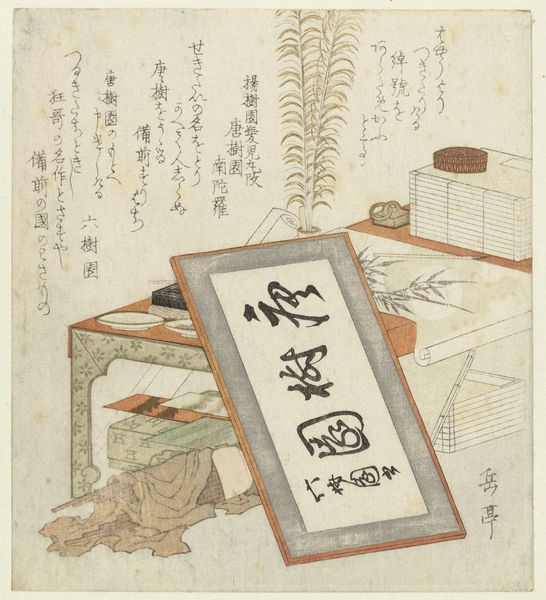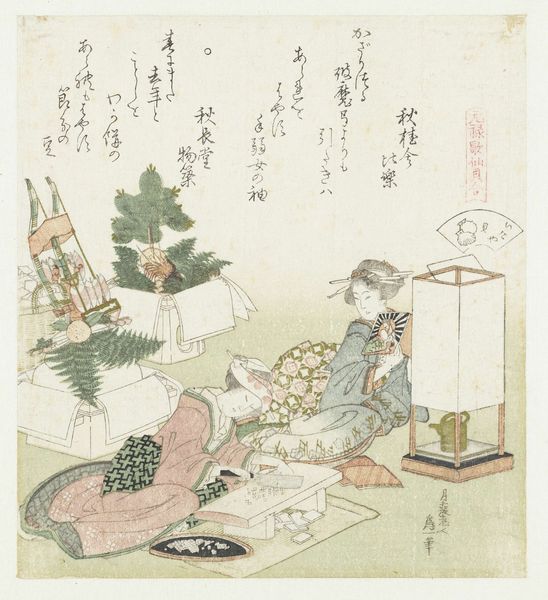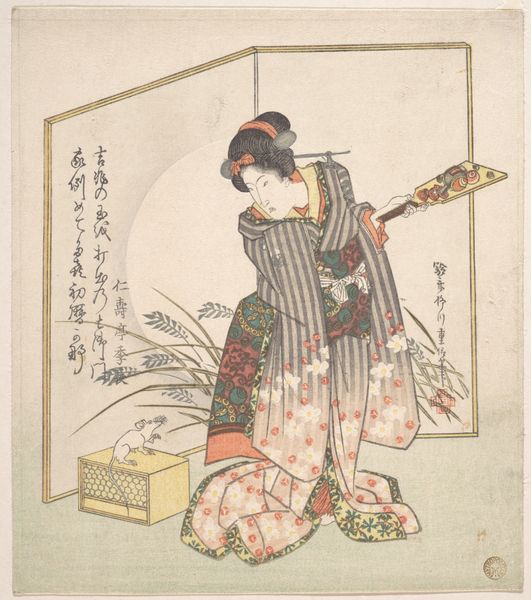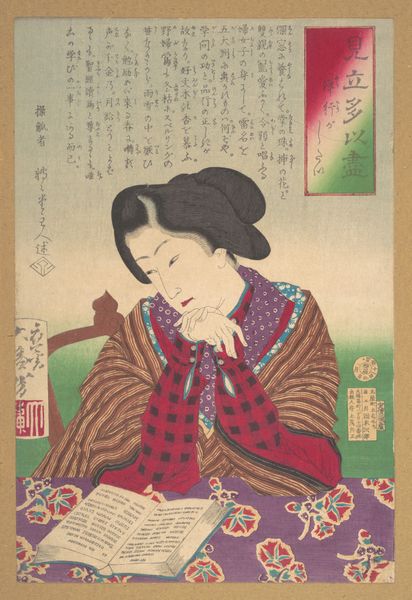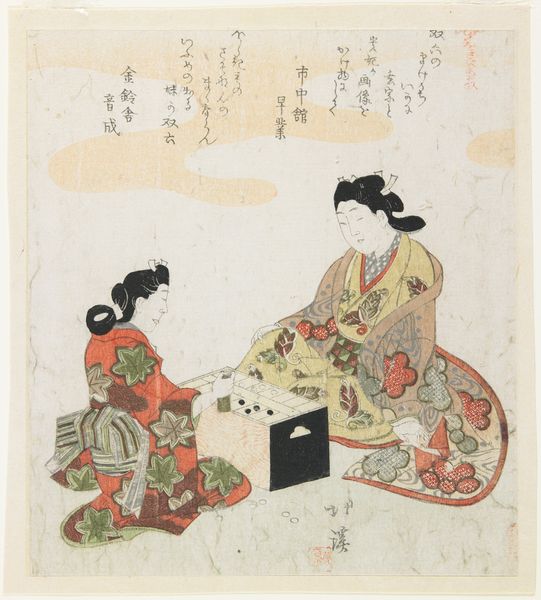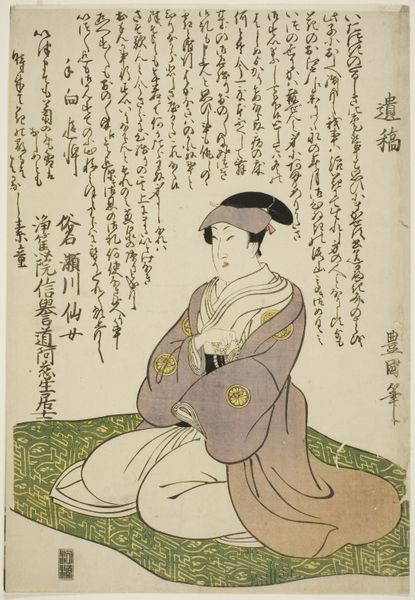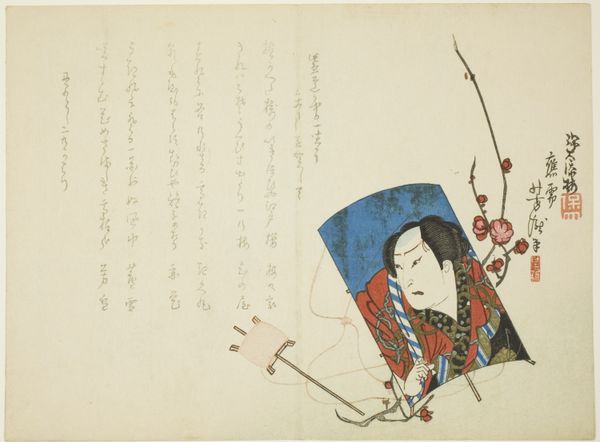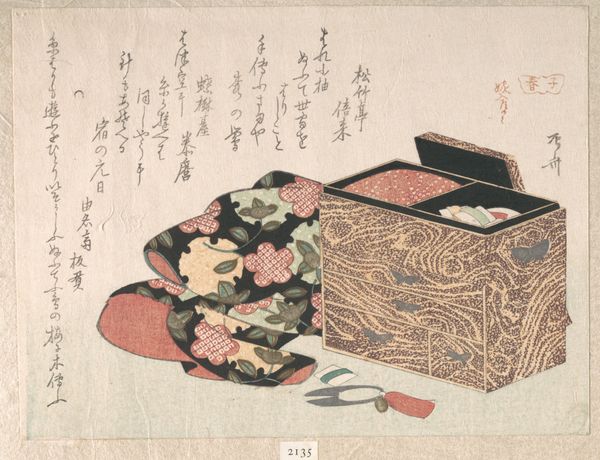
print, woodblock-print
#
portrait
# print
#
asian-art
#
ukiyo-e
#
japan
#
figuration
#
personal sketchbook
#
woodblock-print
#
genre-painting
#
calligraphy
Dimensions: Image: 4 1/4 x 6 5/8 in. (10.8 x 16.8 cm)
Copyright: Public Domain
This woodblock print of a young woman writing calligraphy was created by Kubo Shunman in Japan during the late 18th or early 19th century. Here, calligraphy is more than just writing, it's a potent symbol of status, education, and artistic refinement. Note the bamboo motif behind the woman. In East Asian cultures, bamboo represents resilience, flexibility, and longevity. It is also a potent symbol of moral integrity and is deeply intertwined with Confucian ideals of virtue. Bamboo appears in Chinese and Japanese art from as early as the 13th century. The gesture of writing itself—the hand poised with a brush—echoes across centuries. Think of the scribes in ancient Egypt or the illuminated manuscripts of medieval Europe. The act of recording, of creation through script, carries a profound psychological weight. It speaks to our deep-seated need to leave a mark, to transcend mortality through the written word. This image of a young woman with her brush isn't frozen in time; it's part of a larger cultural memory, constantly re-emerging in new forms.
Comments
No comments
Be the first to comment and join the conversation on the ultimate creative platform.


